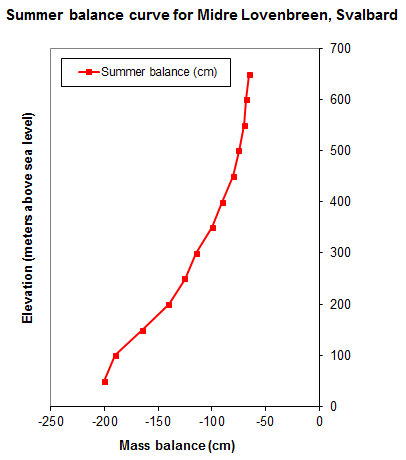Ablation by melting

Glacier mass balance data from the World Glacier Monitoring Service
For a typical alpine glacier, the major component of mass loss is by ice & snow melting. This meltwater then runs off to a river and eventually to the sea. Most of the melting happens in the summer, as that is when air temperatures are warmest, and hence this component is often referred to as the summer balance.
In late spring or early summer, when air temperatures first start to rise above 0°C, the glacier will typically be covered in snow. This must be melted before the ice beneath can start to melt. Melting will happen at lower elevations first, as this is where it is warmest, so the snout (or tongue or front) of the glacier will experience more melting than the higher areas. If we plot a graph of the amount of melting versus elevation, it would be more negative (because melting is mass loss) at the bottom of the glacier and less negative at the top.